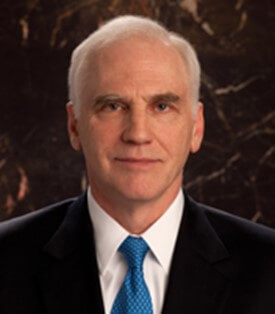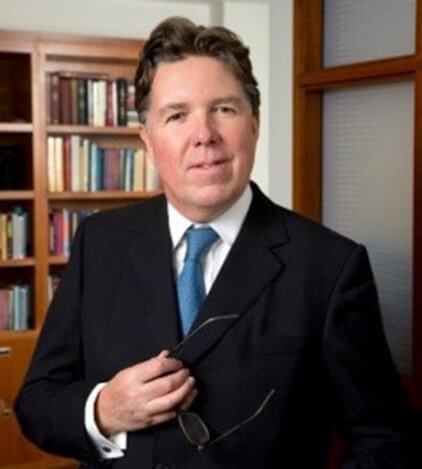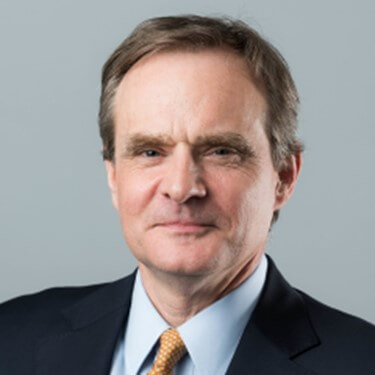Before stepping down from the Federal Reserve Board of Governors, where he served for eight years, Daniel Tarullo had some parting shots. Four months before his April 2017 departure, as the Obama administration was winding down, Tarullo gave a speech defending its post‐financial‐crisis policy legacy and calling for continuity.
“I do not think there is a sound economic case for generally weakening the regulatory requirements applicable to the largest banks,” he said. “And I certainly do not think the taxpayers should bear the risk that would be entailed by any such weakening.”
Today he is worried about backsliding, or as he put it in remarks on May 21 to an Americans for Financial Reform event in Washington, about “a kind of low‐intensity deregulation, consisting of an accumulation of non-headline-grabbing changes and an opaque relaxation of supervisory rigor.
“There are things to be concerned about in many of the individual proposals on such matters as the leverage ratio, resolution planning, and foreign banking organizations,” Tarullo, a Georgetown University law professor, continued. “It's the cumulative effect, though, that is truly worrisome.”
“Substantial Weakening”
Tarullo is not a solitary, albeit out‐of‐power, voice on the state of financial regulation more than halfway through the Trump administration.

He noted in his speech that former Fed chairs Ben Bernanke and Janet Yellen joined with former Treasury secretaries Timothy Geithner and Jacob Lew in a critique of interpretive guidance on nonbank oversight from the Financial Stability Oversight Council (FSOC). Their May 13 letter cited what “amount[s] to a substantial weakening of the post-crisis reforms. These changes would make it impossible to prevent the build‐up of risk in financial institutions whose failure would threaten the stability of the system as a whole.”
Simon Johnson, who was chief economist of the International Monetary Fund in 2007 and 2008, outspoken on the too‐big‐to‐fail issue, and co‐author of 13 Bankers: The Wall Street Takeover and the Next Financial Meltdown, is also still on message.
While currently on the speaking circuit discussing the recently published Jump‐Starting America: How Breakthrough Science Can Revive Economic Growth and the American Dream (co‐written with Jon Gruber), Johnson said in an interview with GARP Risk Intelligence that forgetting or disregarding the lessons of the crisis could have dire consequences.
The Ronald A. Kurtz (1954) Professor of Entrepreneurship at Massachusetts Institute of Technology's Sloan School of Management - he is also active in MIT's Digital Currency Initiative and is a senior fellow at the Peterson Institute for International Economics - said that “financial regulators were handed a firm regime, and now they are ruining it” and inviting “risk to the financial system.”
Systemic Risk Council
The private‐sector Systemic Risk Council, which was founded by former Federal Deposit Insurance Corp. chair Sheila Bair in 2012 and is currently chaired by ex-Bank of England deputy governor Paul Tucker - and of which Johnson is a member - has also attacked the FSOC's proposal to pull back from designating certain nonbank intermediaries as systemically significant.
In wording similar to Tarullo's, the Systemic Risk Council's May 21 comment letter signed by Tucker stated that the “cumulative effect” of certain innocuous‐sounding conditions “would almost certainly be to deprive the FSOC of the capacity to designate a systemically significant firm in a timely way: meaning in time to head off the risks posed to stability.”
Tucker's conclusion: “If the U.S. Treasury and its fellow FSOC members go ahead with their proposal, they will be exposing the American people to risks that are quite unnecessary given the powers granted to them by Congress in the Dodd-Frank Act . . . The Systemic Risk Council urges the FSOC to abandon this proposal, and get back to ensuring the financial system is resilient, where there is plenty of work still to be done. That should include energetically identifying and addressing activities that pose a material threat to stability, and not flinching from designating intermediaries whose disorderly failure would create a problem for the system and the economy.”
Leveraged Lending
Amid a growing U.S. economy, a better‐capitalized banking industry performing at or near record levels of profitability can be a difficult target for critics of the supervisory framework. Top regulators such as Fed chair Jerome Powell and Comptroller of the Currency Joseph Otting have been forthright in flagging credit risks, notably growth in leveraged lending that is not confined to the institutions that they regulate.

“A highly leveraged business sector could amplify any economic downturn as companies are forced to lay off workers and cut back on investments,” Powell said in a May 20 speech to a Federal Reserve Bank of Atlanta conference. “Investors, financial institutions and regulators need to focus on this risk today, while times are good.”
He was quick to add that “today business debt does not appear to present notable risks to financial stability.”
The week before, leveraged lending was a flash point when Randal Quarles, the Fed's vice chair for supervision as well as chair of the international Financial Stability Board, was questioned at a Senate Banking, Housing and Urban Affairs Committee hearing by Senator Sherrod Brown, Democrat of Ohio. Quarles, in agreement with other senior regulators, said the risks were being watched closely, but he did not go so far as to say that the exposure to highly leveraged borrowers posed a threat to the financial system.
Brown, at the Americans for Financial Reform event that was addressed by Tarullo, said, “The threat of another financial crisis is very real . . . There's a collective amnesia because people want to forget.”
Reconsideration of Stress Testing
Quarles led off his May 15 testimony with a reference to the Fed's first supervisory stress tests 10 years ago: “an invention of both urgency and necessity and a tool to move the country's largest financial institutions towards safety and stability.
“Many innovations from that period are now regular elements of the Federal Reserve's supervisory and regulatory work,” the vice chair went on. “These innovations have helped strengthen firms that were damaged by the crisis; given supervisors and the public a clearer view of risks in the financial system; and provided a solid foundation for the nation's economic recovery. Economic and market conditions have afforded us the time and opportunity to refine and improve the post-crisis regulatory framework. Now - when the financial system and economy are in good health - is the time to consolidate the insights we have gained and to better the framework we have built.”
Quarles has taken the lead in revisiting stress-test procedures, including a commitment to greater transparency in terms of models and scenario design. “We believe that the adjustments under development strike the right balance of advancing transparency, while maintaining incentives for firms to think critically about their own risks,” he said in a November 2018 speech at the Brookings Institution.
On February 6, in a talk on the importance of public participation in “stress testing's next chapter,” Quarles noted that the Fed had just “acted to suspend stress tests this year for lower‐risk firms - generally, those with total assets between $100 billion and $250 billion.”
More will be aired at an invitation-only “discussion and review” hosted by the Federal Reserve Bank of Boston on July 9.
CCAR and Capital
Tarullo, who took responsibility for supervision and regulatory policy during his Federal Reserve Board tenure, focused most of his Americans for Financial Reform presentation on “stress testing and the CCAR [Comprehensive Capital Analysis and Review] regime, because capital requirements remain the single most important element of the post-crisis prudential regulatory regime, and CCAR has been the binding capital constraint for the largest banks.” He underscored the dynamic nature of the process as well as inherent limitations that need to be worked around.
“Neither regulators nor bankers can count on anticipating correctly what the next source of severe stress will be,” Tarullo said, and “stress testing needs continually to shift to take account of varied risks, even as it changes to become more administratively efficient. If the stress test becomes predictable, it ceases to have value.”
He called the principles of transparency and fairness “hard to argue with in the abstract,” but they raise the specter of “regulatory arbitrage, which has always been a problem for regulatory capital requirements. Once they know with precision the characteristics of an asset that place it in a particular risk category, they will find clever ways to reshape their assets so as to reduce capital requirements without reducing risk.”
“There are other low-profile ways that the integrity of stress testing can be compromised,” said Tarullo, who ultimately arrived the conclusion that “capital requirements for the largest banks should be going up, not down. The limitations of the stress test, the realization that there may be less government support in a future crisis, and the prospect of longer, deeper recessions because of the zero lower bound on monetary policy all argue as much. Sound risk management principles argue in the same direction.”
Simon Johnson likewise asserted that it is wrong to be lowering capital requirements, or creating a climate reminiscent of the crisis in which excessive risk-taking is rewarded.
He believes the next crisis is less likely to be caused by poorly understood, complex products like collateralized debt obligations than from basic failures in recognizing and mitigating risk. Although there are continual “cycles of risk, of people being less careful,” Johnson takes hope from the recent Wells Fargo scandal that lessons have been learned about culture, conduct and the treatment of customers.
Tarullo said that in contrast to other industries that have undergone deregulation, the negative consequences in financial services are not immediately observed. “The damage may come after those who have done the deregulation have moved on,” he said.
CCPs and Giancarlo's Talk-Back
Central counterparty (CCP) clearing organizations, having succeeded at de-risking significant volumes of over‐the‐counter interest rate and credit default swaps since enactment of the Dodd‐Frank reforms, have come under scrutiny for concentrating and, under potential crisis conditions, transmitting systemic risk. A Systemic Risk Council letter in March, responding to a Financial Stability Board discussion paper, said that these “too important to fail” and “super-systemic” entities are in urgent need of orderly resolution plans.

“Turf rivalries between market regulators, resolution authorities and central banks cannot justify the lack of action,” the Paul Tucker‐signed missive said in its conclusion. “If regulators insist that in-life recovery plans can always be sufficient (and so set aside any resolution planning), their incentives need to be sharpened by laws that would make them liable if they prove wrong.”
J. Christopher Giancarlo, the soon‐to‐step-down chairman of the Commodity Futures Trading Commission, confronted such CCP risk talk - which had also surfaced in a New York Times article about a default on Nasdaq Clearing in Sweden last September - in a May 10 speech to a Futures Industry Association conference.
“If you were to read some press reports, you would think that regulators are unaware of, and unprepared for, these challenges,” said Giancarlo, as if “they did not realize that CCPs could suffer losses that challenge or exceed their prefunded default resources, and they had never confronted the question of 'What if a CCP blows up?'
“Similarly,” Giancarlo added, “the Systemic Risk Council, an independent group of former government officials, lawyers and financial professionals, asserts that regulators commonly believe that a CCP's own recovery plans can substitute for resolution action by authorities, and that there are no high-level principles that guide authorities' approaches to resolution.
“None of this is true.”
He went on to detail CCP structures and standards in the context of domestic and international clearing mandates, citing, for example, Dodd‐Frank Title II's Orderly Liquidation Authority and the three Rs oversight principles - resiliency, recovery and resolution - the latter mentioned with credit to the previous CFTC chairman, Timothy Massad, a Barack Obama appointee.
Current Principles and Future Vision
“The SRC letter demands what is already extant and available - a 'set of high-level principles that will guide [FSB's] approach to CCP resolution,'” Giancarlo stated in a section of his speech on international recovery-and-resolution standards.
“In fact, such principles are thoroughly set forth” by the Financial Stability Board and CPMI‐IOSCO. “They call for, and the recovery plans and rules of CFTC‐supervised SIDCOs [systemically important derivatives clearing organizations] establish, recovery arrangements that allocate, fully and comprehensively, any uncovered credit loss. Moreover, such recovery plans are both enforceable and transparent, at least for CFTC‐regulated SIDCOs, leaving members' exposure to loss measurable, manageable and controllable.”
“Yet, it is inarguably true that recovery plans and rules, while necessary, are not sufficient . . . We work to ensure that the CCPs that we regulate have thorough, viable and well-developed recovery plans and rules to avoid the necessity for resolution, and to serve as the foundation for resolution planning.”
Giancarlo closed by noting how the heightened awareness of clearing houses and possible risk transmission raise “the legitimate question of whether market regulators can stay abreast of rapid growth and pace of change.” That led him to reiterate his vision of “21st century regulation.”
“The world's preeminent derivatives markets need the world's most advanced technological competency and risk analysis capability,” he said. “I believe that the CFTC and, indeed, all market regulators here and abroad, must boldly transform themselves into quant-driven agencies conducting risk surveillance and analysis using broad data collection, automated data analysis and state‐of‐the‐art artificial intelligence.”